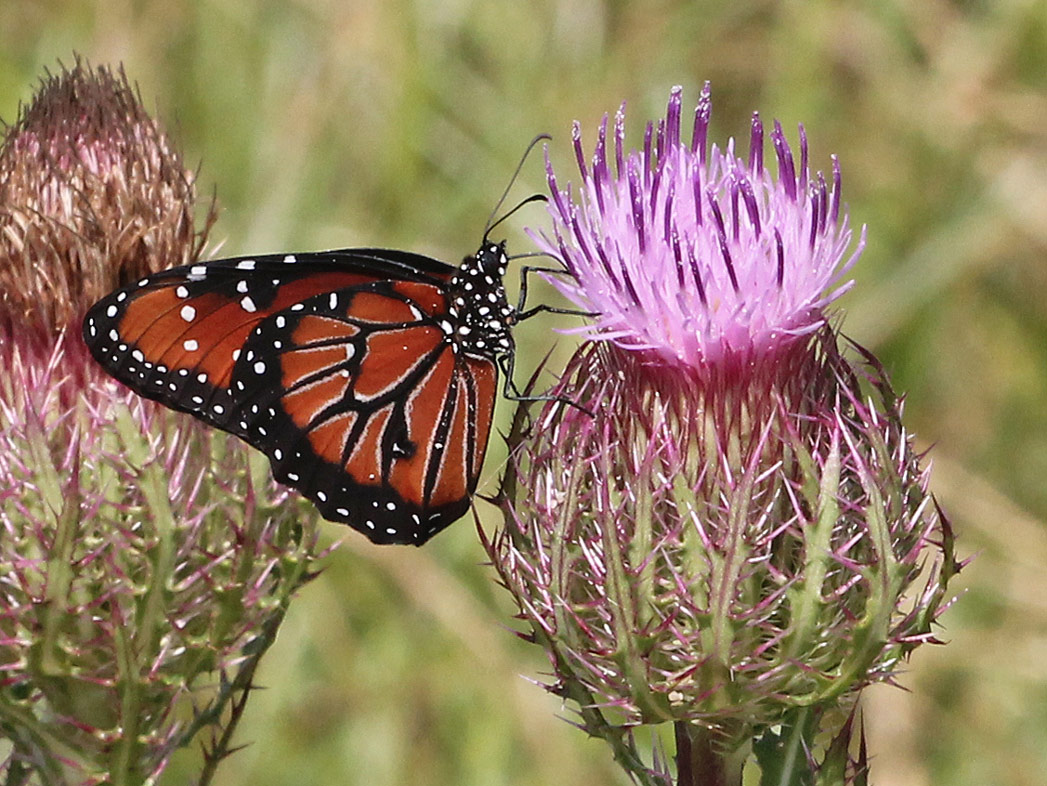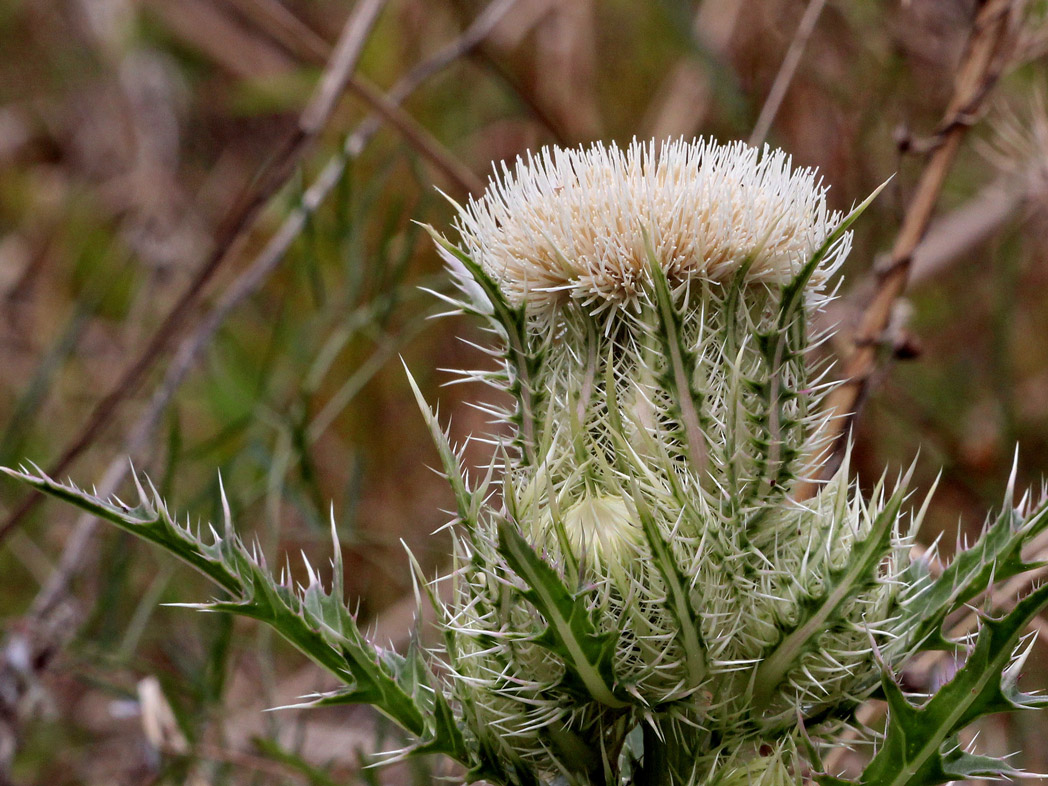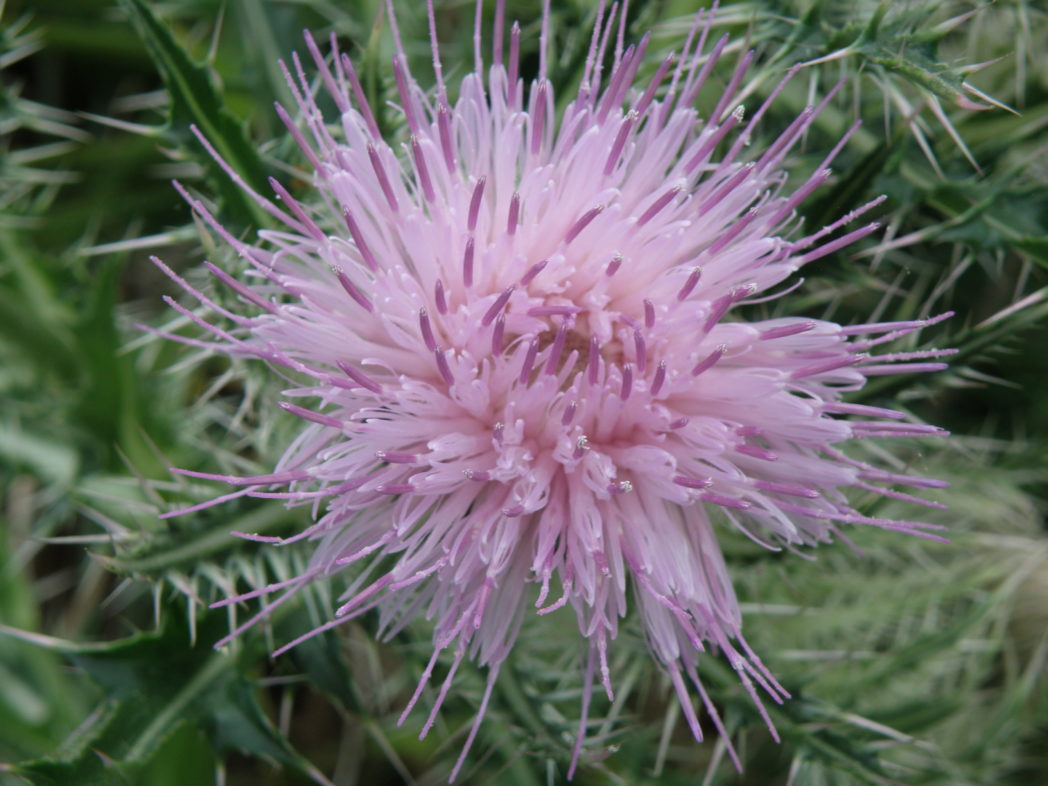Purple thistle
Pictured above: Purple thistle (Cirsium horridulum) by Stacey Matrazzo
Purple thistle (Cirsium horridulum)
Click on terms for botanical definitions. View as a PDF
Thistles have a bad reputation for their spiny personality, but these formidable wildflowers shine as favorite nectar and host plants for many bees and butterflies, including swallowtails. Purple thistle (Cirsium horridulum) is a larval host for the Little metalmark (Calephelis virginiensis) and Painted lady (Vanessa cardui) butterflies. The seeds are an important food source for seed-eating birds. Purple thistle occurs naturally in pinelands and prairies; it is common along roadsides and in disturbed habitats. It typically blooms in summer and fall but may bloom year-round.


You may not notice Purple thistle’s broad basal rosette of menacingly spiked green and purple leaves growing low to the ground, but you will recognize the tall stalks topped with large purple flowers that emerge from the rosettes in the spring. The basal leaves can grow up to a foot or more in length. Leaf margins are toothed, and each tooth is armed with a sharp spine. When broken, the stem exudes a milky sap. The unopened flower buds resemble tiny artichokes, while the mature blooms appear as compact purple brushheads contained within a fortress of wickedly spiny leaves. No wonder this species’ name is horridulum! All parts of the plant, including the seeds, have sharp spines.
There are seven species of thistle in Florida, and although this one prefers dry sites, several are found in wet, boggy areas.
Family: Asteraceae (Aster, daisy or composite family)
Native range: Throughout Florida
To see where natural populations of purple thistle have been vouchered, visit florida.plantatlas.usf.edu.
Hardiness: 8A–10B
Soil: Moist to very dry, well-drained sandy or calcareous soils
Exposure: Full sun to partial shade
Growth habit: 1–4’ tall
Propagation: Seed
Garden tips: Purple thistle flowers are long-lived. In mass, they make for a beautiful display of pinkish-violet hues. After flowering, the plants retain interest by forming cottony white seed heads that shatter to the wind. However, the plant’s prolific amount of seeds, coupled with its tendency to spread via underground suckers, makes it very difficult to control in a landscape.
Purple thistle plants are occasionally available at nurseries that specialize in native plants. Visit plantrealflorida.org to find a nursery near you.

